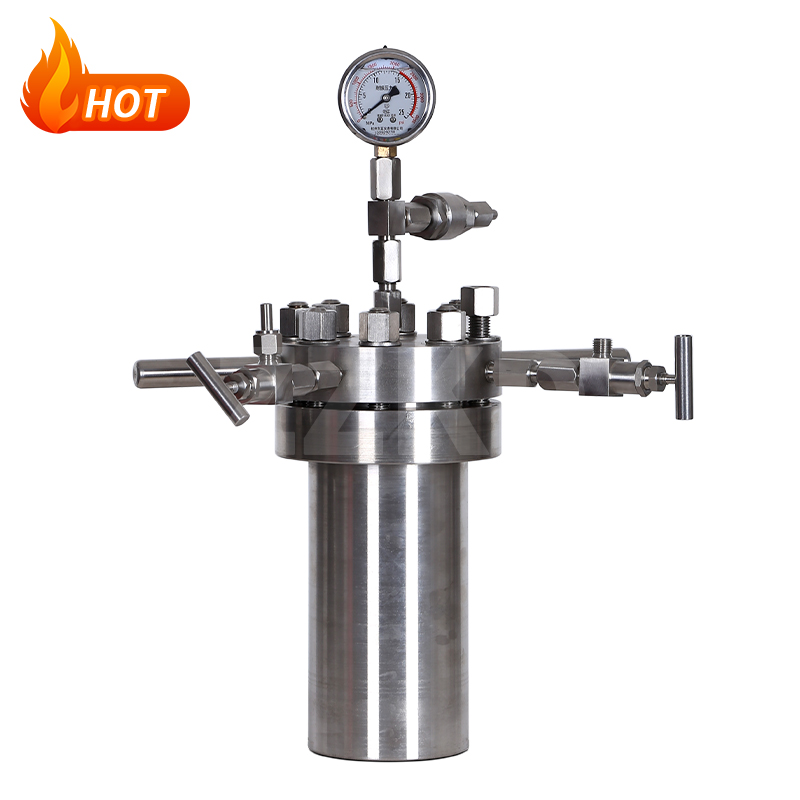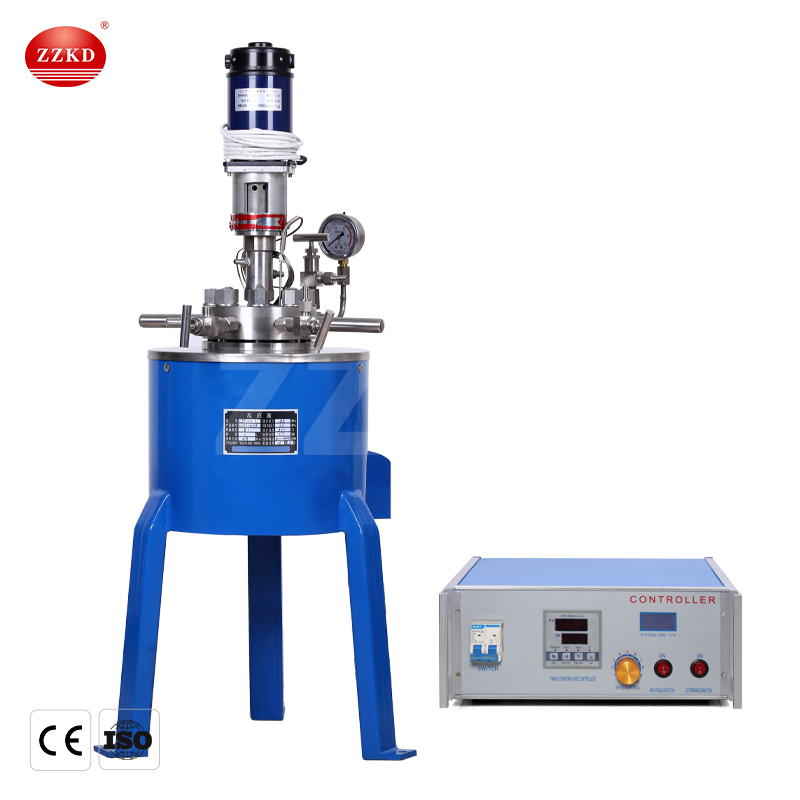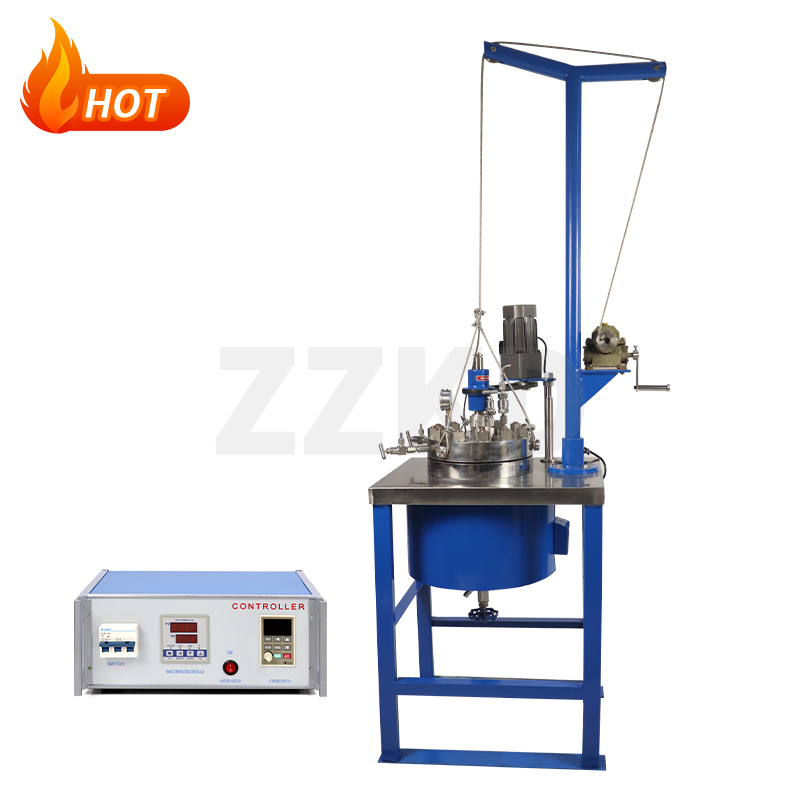High Pressure Stainless Steel Reactor
The high-pressure stainless steel reaction kettle is a typical innovation of the magnetic transmission device applied to the reaction equipment. It fundamentally solves the problem of shaft seal leakage that cannot be overcome by the previous packing seal and mechanical seal. This device does not have any leakage and pollution. It is an ideal device for high pressure reactor manufacturers under high temperature and high pressure in China, especially for chemical reactions of flammable, explosive and toxic media, which shows its superiority. While using it, we also cannot ignore the security issues it brings.
Precautions before use:
The sealing ring of the high-pressure stainless steel reaction kettle adopts the form of conical surface contact sealing, and the main bolts can be tightened to achieve the purpose of mutual compression and sealing. Therefore, the sealing cone must be protected during use to avoid damage to the sealing cone caused by collision. When installing the cover, place the kettle body first, then install the kettle cover on the kettle body in a fixed position, tighten the main bolts diagonally, and gradually tighten them symmetrically, with even force, and do not allow the kettle cover to tilt to one side. Good sealing effect, do not use too much force to screw the main bolt to prevent the sealing surface from being squeezed or accelerated wear. All threaded connections should be coated with oil and graphite during assembly. If the sealing surface is damaged, rework and repair can restore good sealing performance.

Sealing Operation:
The air inlet and exhaust valve of the autoclave are sealed with needle valve. When closing, turn the valve needle gently. Pay attention to pressing the cover to achieve a good seal. Do not use too much force to tighten the main bolt to prevent damage to the seal. noodle. Before using the high-pressure stainless steel reactor, it is necessary to carry out the heating and pressure sealing test. The test medium can be used with inert gases such as air and nitrogen, and oxygen or other flammable and explosive gases cannot be used. The autoclave heating and pressure increase must be carried out slowly. The heating rate is not more than 80 degrees/hour. During the pressure test, connect the inlet valve of the autoclave to the compressor with a connecting pipe. The pressure increase must be carried out in five times, with 20% working pressure as the interval, each liter level stays for 5 minutes, and when it reaches the test pressure, it stays for half an hour to check the sealing condition. The test pressure is 100-105% working pressure. If a leak is found, the pressure should be reduced first, and then the nuts and joints should be tightened. It is not allowed to tighten the nuts and joints under high pressure.
Cooling process:
During the autoclave reaction process, rapid cooling and rapid heating are prohibited to prevent excessive temperature changes from causing cracks in the autoclave. After the high-pressure reaction is over, the autoclave is first cooled down, which can be cooled by water, and the high-pressure gas in the autoclave is released to reduce the pressure to normal pressure, and then the bolts are loosened and removed. In the process of opening the lid, care should be taken to protect the sealing surface, and the lid of the kettle should be lifted to avoid damage to the sealing environment of the lid and the kettle body due to collision. After each operation, remove the residue on the autoclave body and lid. All sealing surfaces on the autoclave need to be cleaned frequently and kept dry. Hard objects or soft objects with rough surfaces are not allowed to clean the autoclave.

Safe use regulations:
Before feeding, check whether the reaction kettle is polluted. Clean the inner wall of the autoclave, stirring, cooling coil, temperature probe sleeve and joint surface with ethanol, and then rinse with distilled water. After rinsing, dip in cotton or silk cloth. Clean with ethanol to prevent cross-contamination of materials. Before use, it is necessary to check whether the valves are unblocked, especially the nozzles of the pressure gauge and explosion-proof diaphragm. For the intake duct, it is also necessary to pay special attention to whether there is blockage. If the material is contaminated or blocked, the duct and the intake branch pipe should be removed from the kettle cover, cleaned and then installed.
Tightness check:
After cleaning, the high-pressure stainless steel reactor should be checked for tightness after drying. Put the kettle body into the heating furnace, put the protruding part into the groove, gently rotate the kettle body, and close the kettle body and the kettle cover slowly and smoothly after placing it steadily. Special attention should be paid to protecting the sealing surface. Avoid damage to the sealing ring of the kettle cover and the kettle body due to collision. After the cover is completed, check whether the upper and lower interfaces of the reaction kettle are aligned. Gently rotate the kettle cover to confirm that the kettle cover has been leveled and the sealing ring is in good contact. After adding gaskets, start screwing. When screwing on the screw, it must be seated correctly, and then tighten it by hand first, and then use a torque wrench to form a cross symmetrically on the ground to avoid uneven force. Do not twist the screws in place at one time, twist the diagonal screws several times, and gradually tighten them symmetrically.

Air tightness check:
When checking the air tightness, first check whether each valve (solid feeding port, kettle cover exhaust valve, intake valve, etc.) is tightened (you can eat and hold, do not use too much force), check the stirring switch of the controller, adjust the After the quick heating switch is adjusted to zero, turn on the power supply of the control box and its display switch.
1.Connect nitrogen
Connect the nitrogen gas cylinder to the autoclave inlet through the conduit, and tighten the relevant screws. Open the main valve and partial pressure valve of the nitrogen bottle, first adjust the pressure of the partial pressure valve to the pressure required for the experiment, and then open the inlet valve of the reactor to slowly charge the gas into the reactor. When the set pressure on the nitrogen bottle is the same and does not change, close the inlet valve of the reactor and the outlet valve of the nitrogen bottle in sequence, record the pressure value displayed by the reactor, and observe whether the pressure changes after half an hour.
2. Check for leaks
If a significant decrease in pressure is observed, the leak point should be checked. Use soapy water to check for possible leaks in the autoclave. The key inspection areas are: the interface between the autoclave cover and the air inlet pipe, the air outlet pipe, and the pressure gauge; the needle valve interface of the air inlet and the air outlet, the sealing ring between the autoclave body and the autoclave cover, the thermometer probe socket, etc. If air leakage is found, the pressure should be vented first, then the corresponding leakage points should be tightened, and then the pressure should be tested for leakage. After checking that there is no leakage, vent the pressure and rinse the soapy water with deionized water.


